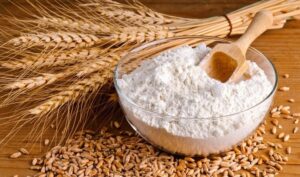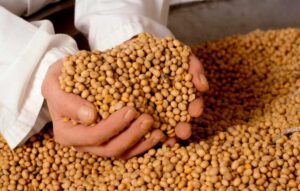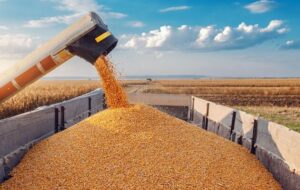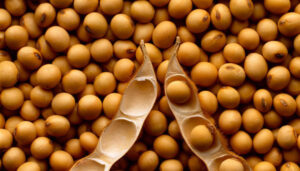
Ukraine exported 26,000 tons of wheat flour in the first five months of the 2025-2026 marketing year (MY, July-June), which is 11% less than in the same period of the previous MY. of which 5.4 thousand tons (-7%) were shipped in November, according to the information and analytical agency “APK-Inform.”
Analysts specified that the main volume of exports went to Moldova (30%), the Czech Republic (18%), and Palestine (16%).
“Importers have significantly reduced their purchases of Ukrainian products. For example, Moldova purchased 7.9 thousand tons this season, which is 10% less than in the previous season, and the Czech Republic purchased 4.7 thousand tons (-23%). Palestine reduced its imports, purchasing only 4.3 thousand tons compared to 5.7 thousand tons in the 2024/25 season (-25%),” experts said.
According to their estimates, in July-November 2025/26 MY, Ukraine produced 371.7 thousand tons of flour, which is 8% less than in the same period of 2024/25 MY.
“In general, wheat processing in 2025/26 MY is expected to reach 2.6 million tons, which is 2% less than last season,” APK-Inform predicts.

The Cabinet of Ministers has adopted a resolution introducing a mechanism for monitoring soybean and rapeseed exports, according to the press service of the Ministry of Economy, Environment, and Agriculture.
“We are introducing a transparent mechanism that allows producers, rather than intermediaries, to be exempt from export duties. The funds that the state will receive from traders’ duties will replenish a special budget fund and will be directed to programs to support frontline territories, where farmers work in the most difficult conditions, grants for processing, greenhouses, orchards, and insurance against military risks,” said Deputy Minister of Economy, Environment, and Agriculture Taras Vysotsky, whose words are quoted in a statement on the ministry’s website.
The Ministry of Economy noted that the document aims to ensure the fair application of export duty exemptions for certain categories of agricultural producers.
The new procedure establishes a monthly monitoring mechanism to be implemented by the Ministry of Economy to verify the compliance of exported product volumes with the data contained in the State Agrarian Register (SAR) regarding the actual products grown. If discrepancies are found between the declared and actual volumes grown, the Ukrainian Chamber of Commerce and Industry is obliged to cancel the expert conclusions.
“The introduction of such a mechanism ensures that only those exporters who have actually grown the products themselves will benefit from the exemption from export duties,” the ministry added.
The resolution ensures transparent and fair administration of the export duty exemption, prevents abuse during the export of soybeans and rapeseed, provides equal and fair conditions of competition for agricultural producers, and ensures state support for farmers, as only traders, not producers, will pay the duty, the statement said.
The government’s decision is expected to strengthen state control, ensure targeted budget revenues, and contribute to the stability of the agricultural sector. Monitoring will make it possible to simultaneously support conscientious producers and guarantee the replenishment of a special fund for the implementation of key agricultural development programs.
As reported, in September 2025, a law was passed introducing a 10% export duty on soybeans and rapeseed. Agricultural producers and cooperatives that export their own products are exempt from paying the duty. The duty is paid by traders and other exporters who are not producers. The mechanism is aimed at supporting farmers, stimulating domestic processing, and filling a special state budget fund to finance agricultural programs.

The Ukrainian Grain Association (UGA) forecasts that the harvest of grain and oilseeds in 2025 will reach 81.4 million tons, compared to 79 million tons (+3%) a year earlier, the association’s press service reported.
“With such a harvest, exports in the current 2025/26 season could potentially reach 49 million tons (last season – 46.7 million tons). However, this is an optimistic scenario, the implementation of which depends on the resolution of serious logistical problems,” the UGA noted.
The association recalled that Ukraine is currently experiencing significant problems in grain export logistics due to constant Russian terrorist attacks on critical infrastructure: energy, railways, and seaports of Ukraine. As a result of Russian shelling of civilian infrastructure, railways and ports cannot operate at full capacity due to damage to their infrastructure, power shortages, and constant power outages.
“It is obvious that the inability to export significant volumes of the harvested crop due to logistical problems will not only have an extremely negative impact on Ukrainian agricultural producers and the price situation on the domestic market, but may also deal a severe blow to Ukraine’s economy and its balance of payments,” the UGA noted.
The UGA estimated the wheat harvest in 2025 at 22.5 million tons, compared to 22.4 million tons (+0.45%) a year ago. With this in mind, potential wheat exports in 2025/26 MY could reach 16.5 million tons, the UGA suggested.
The barley harvest in 2025, according to the association’s estimates, is 4.9 million tons, compared to 5.6 million tons (-2.5%) a year ago, and the likely export in 2025/2026 MY is forecast at around 2.3 million tons.
The UGA expects the corn harvest to reach 32 million tons, compared to 25.9 million tons (+23.6%), and experts believe that potential exports in the current season could reach 25 million tons, provided that logistics are unhindered.
The UGA forecasts the sunflower harvest in 2025 at 11.5 million tons, compared to 12.8 million tons (-10.2%) a year ago. Traditionally, almost all sunflowers will be processed in Ukraine – 11.4 million tons, while exports will reach no more than 50 thousand tons.
The rapeseed harvest in 2025 will be 3.2 million tons, compared to 3.8 million tons (-15.8%) a year ago, while exports in 2025/26 MY may reach only 2.1 million tons, with the rest being processed in Ukraine.
According to the UGA, the soybean harvest in 2025 will be about 5 million tons, compared to 6.8 million tons (-26.5%) in 2024, which is explained by a significant reduction in the area sown with this crop and poorer yields. Nevertheless, potential exports could reach 2.5 million tons in 2025/26 MY, with the rest being processed in Ukraine, as legislative restrictions make its export difficult, as is the case with rapeseed.
“As for next year’s harvest, since the acreage under winter crops is already known and taking into account the forecast for spring crops, next year’s potential harvest could amount to 84.5 million tons of grains and oilseeds, of which Ukraine could potentially export about 50 million tons of grains and oilseeds,” the UGA predicts.
The Ukrainian Grain Association (UGA) is an association of producers, processors, and major grain exporters, which annually export about 90% of Ukrainian grain products.

The pharmaceutical company Galichpharm JSC (Lviv) plans to increase sales by 15% by the end of 2025, according to a report posted on its website.
According to the report, in the first nine months of 2025, Galichpharm produced 4.753 million packages of finished medicines worth UAH 904.94 million.
The average cost of one package of manufactured medicines in the form of injections was UAH 132.24, infusions – UAH 32.35, liquids and syrups – UAH 67.9, and tablets – UAH 22.24.
The company’s revenue for January-September reached UAH 252.449 million.
In addition, the company reports that exports accounted for 9.13% of total sales, and its products were supplied abroad for more than UAH 23 million. The company exports to the markets of Kazakhstan, Georgia, Uzbekistan, Latvia, and other countries.
According to the company’s estimates, Galichpharm ranks fifth in terms of retail sales in monetary terms for the first nine months of 2025, with a market share of 1.3%.
As reported, at the end of 2024, Galichpharm reduced its net profit by 39% compared to 2023, to UAH 13.705 million, while in 2023 this figure was UAH 22.52 million.
As reported, the investment company Sky Development won an open auction organized by the Deposit Guarantee Fund and acquired the rights to claim the insolvent JSC Bank Finance and Credit under ten loan agreements with leading Ukrainian pharmaceutical companies: JSC Galichpharm and JSC Kyivmedpreparat. According to Sky Development, the total amount of its claims exceeds UAH 3.5 billion.
For their part, Kyivmedpreparat and Galichpharm stated that the information disseminated by Sky Development is “unreliable, manipulative, and shows signs of deliberate discrediting of the companies’ activities.” In particular, both companies denied the existence of “multibillion-dollar debts” to Sky Development. The pharmaceutical companies regarded the statements of Sky Development LLC as “an attempt to illegally create non-existent creditor debt for the purpose of a possible raider takeover of the companies.”

The tenth annual meeting of the Ukraine-EU Association Committee in Trade (ACTA) was held in Brussels, where issues related to Ukraine’s export duties on soybeans and rapeseed, as well as temporary restrictions on the export of unprocessed timber, were discussed, according to the Ministry of Economy, Environment, and Agriculture.
Ukraine informed its partners that a 10% export duty on soybeans and rapeseed was introduced in 2025 to support the development of agricultural processing within the country. At the same time, agricultural producers who export their own products are completely exempt from paying duties. Therefore, the mechanism introduced does not create additional financial costs for them.
“It is precisely through the proceeds from export duties on soybeans and rapeseed that the state will fill a special budget fund, from which programs to support agricultural producers are financed. First and foremost, these are programs for frontline territories, as well as grants for processing, greenhouses, orchards, compensation for agricultural equipment, insurance against military risks, and other key instruments. This allows us to maintain support for farmers even in wartime,” emphasized Deputy Minister of Economy, Environment, and Agriculture Taras Vysotsky.
The meeting participants also discussed decisions on regulating timber exports, including a temporary ban on the export of unprocessed timber (except pine) and the establishment of zero quotas until the end of 2025.
The Ukrainian side stressed that these measures are aimed at meeting the needs of defense and critical infrastructure, as well as reducing risks to the environment in wartime. At the same time, these measures prevent a shortage of raw materials on the domestic market.
It was separately noted that the Verkhovna Rada of Ukraine is considering draft laws on the formation of an updated timber market model, taking into account security challenges.
The Ukrainian side stressed the importance of continuing an open dialogue with the EU on all temporary measures that the state is applying during the period of martial law. At the same time, maintaining access for Ukrainian products to the European market remains one of the key factors for economic stability and support for national production.
The Ukraine-EU Association Committee in Trade Composition (ACTC) was established in accordance with Article 465 (4) of the Association Agreement between Ukraine and the EU to consider issues related to Section IV “Trade and Trade-Related Matters” of the Association Agreement. The CATS operates in accordance with the rules of procedure approved by Decision No. 1/2014 of the Association Council between Ukraine and the EU of 15 December 2014 “On the adoption of the rules of procedure of the Association Council, the Association Committee and its subcommittees”.
The Trade Committee meets annually and includes representatives from Ukraine and the European Commission.
As reported, a 10% export duty on soybeans and rapeseed for traders has been in effect in Ukraine since September 4, 2025. Agricultural producers who export their own products, or agricultural cooperatives that export the products of their members, are exempt from this duty, provided that the origin of the goods is documented. Until 2030, the duty will be reduced by 1% each year until it reaches 5%.
The Cabinet of Ministers has temporarily banned the export of unprocessed wood (except pine) until December 31, 2025, setting a zero quota for its export. This is done to provide the domestic market with raw materials, support Ukrainian woodworking enterprises, and stabilize the industry.

In the first 10 months of 2025, Ukraine exported 36,400 tons of honey worth over $84 million, with more than 70% going to European Union countries, Deputy Minister of Economy, Environment, and Agriculture Taras Vysotsky said during a forum on the European integration of Ukraine’s honey sector.
He noted that Ukraine is traditionally among the top five global honey exporters, continuing to develop beekeeping even in the difficult conditions of war.
“Ukraine is one of the leaders in honey exports to the EU. This testifies to the high quality, trustworthiness, and competitiveness of our products. The development of digital tools, modernization of production, and strengthening of quality control are gradually creating conditions for scaling exports not only to the EU but also to the markets of Asia and the Middle East,” he wrote on Facebook.
At the same time, Vysotsky stressed that Ukraine should ensure full compliance with EU standards and improve production traceability: clearly record where the honey comes from, which apiaries produced it, and how its quality was checked. This approach will open up new and long-term market opportunities for Ukrainian beekeepers.
According to Vysotsky, there are currently 62,697 apiaries and over 2.84 million bee colonies in the Apiary Passport Register.
“According to experts, integration into the EU market could increase Ukrainian honey exports by 25-30% in the next three years. Our task is to do everything possible to make this forecast a reality,” the deputy minister concluded.